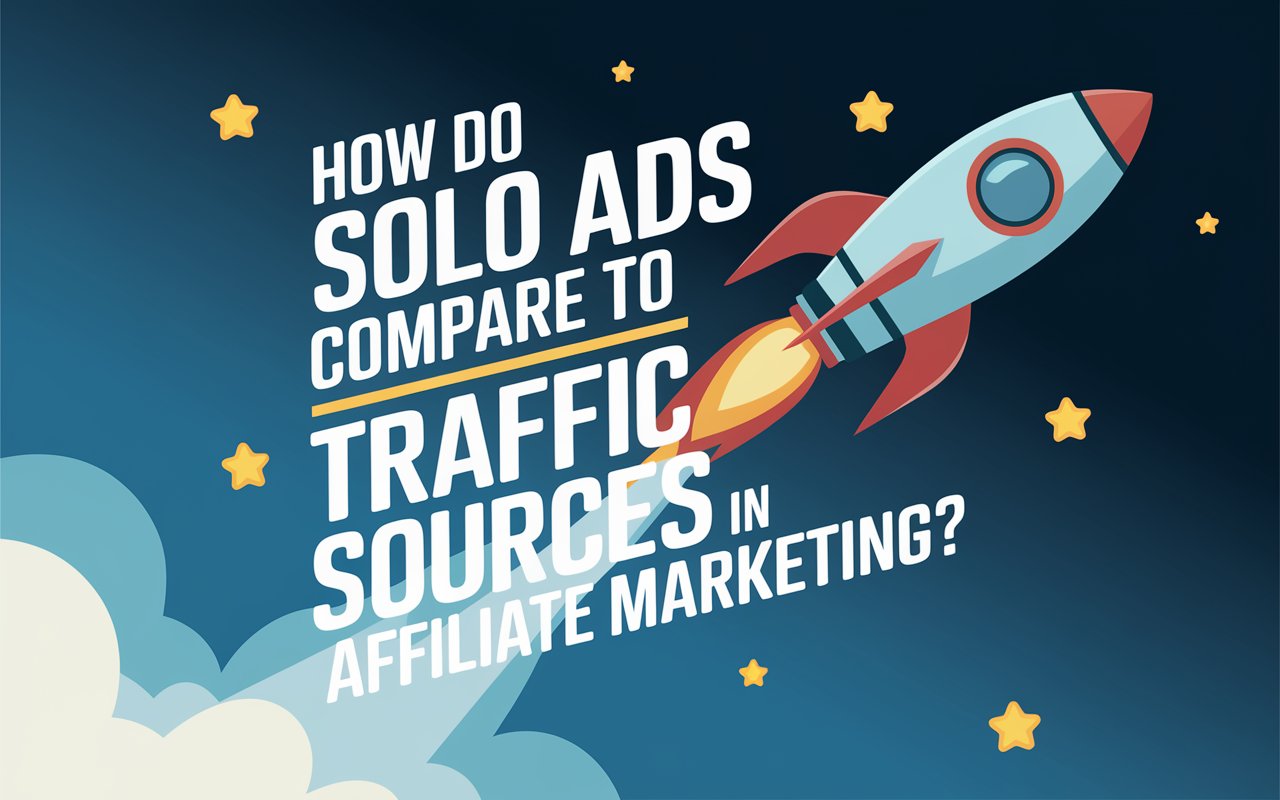Affiliate marketing relies heavily on generating targeted traffic to convert potential customers into buyers. Among the various traffic sources, solo ads stand out due to their unique characteristics, advantages, and drawbacks. Here’s a detailed comparison of solo ads with other popular traffic sources in affiliate marketing.
Table of Contents
1. Understanding Solo Ads
Solo ads involve purchasing email traffic from someone else’s list. The list owner sends an email, typically containing your offer or affiliate link, to their subscribers. You pay based on the number of clicks your offer receives. This method is popular among affiliates looking for quick results.
Pros:
- Targeted Audience: The list owner often tailors the email content to their audience’s interests, making the traffic highly targeted.
- Quick Results: Solo ads can generate traffic quickly since the email is sent directly to a list of engaged subscribers.
- Simplicity: No need to build your list or run complex ad campaigns; you leverage an existing list.
2. Comparison with Other Traffic Sources
A. Paid Social Media Advertising (Facebook Ads, Instagram Ads, etc.)
Targeting Precision: Social media platforms offer advanced targeting options, allowing you to reach specific demographics, interests, and behaviors.
Scalability: You can scale your campaigns based on performance, adjusting budgets and targeting to optimize results.
Engagement: Social media ads can drive both traffic and engagement, helping to build brand awareness alongside direct conversions.
Learning Curve: Requires a good understanding of ad platforms, targeting strategies, and creative design.
B. Search Engine Marketing (Google Ads, Bing Ads)
Intent-Based Traffic: Search ads target users based on their search queries, meaning they have a high intent to purchase.
High-Quality Leads: Typically, search traffic has a higher conversion rate because the users are actively seeking a solution.
Cost: Can be expensive, especially in competitive niches, but the high-quality leads often justify the cost.
Complexity: Requires keyword research, bid management, and optimization to maintain a positive ROI.
C. Content Marketing (Blogging, SEO)
Long-Term Traffic: Content marketing builds organic traffic over time, providing a steady flow of visitors without ongoing ad spend.
Authority Building: High-quality content can establish you as an authority in your niche, leading to better trust and higher conversions.
Cost-Effective: While time-consuming, content marketing can be more cost-effective in the long run compared to paid traffic sources.
Patience Required: Results from content marketing take time and consistent effort.
D. Influencer Marketing
Leverage Trust: Influencers have established trust with their audience, which can lead to higher conversion rates.
Targeted Exposure: You can reach a niche audience by partnering with influencers in your niche.
Cost Variability: Costs can vary widely depending on the influencer’s reach and engagement.
Risk of ROI: Success depends heavily on the influencer’s credibility and alignment with your offer.
3. Solo Ads vs. Other Traffic Sources: Which Is Best?
Speed vs. Sustainability: Solo ads are great for quick bursts of traffic but may not provide long-term sustainability. Content marketing and SEO, on the other hand, build sustainable traffic over time.
Cost-Effectiveness: Solo ads can be cost-effective if you find a high-quality list, but they are a gamble. Search engine marketing and paid social ads offer more control and potential ROI with careful management.
Targeting Precision: Paid social media ads and search engine marketing provide better targeting options, allowing for more precise audience engagement compared to the broader reach of solo ads.
Trust and Engagement: Influencer marketing and content marketing excel in building trust and engagement, leading to potentially higher lifetime customer value.
Conclusion
Solo ads can be a valuable traffic source for affiliate marketers, especially for those seeking quick, targeted traffic. However, they come with risks and should be part of a broader traffic generation strategy. Combining solo ads with other methods like paid social media, search engine marketing, and content marketing can provide a balanced approach, ensuring both immediate results and long-term sustainability in affiliate marketing.
FAQs
- Are solo ads better than Facebook ads for affiliate marketing?
- Solo ads can deliver quicker results, but Facebook ads offer better targeting and scalability for long-term success.
- What is the biggest risk of using solo ads?
- The biggest risk is investing in low-quality lists that don’t convert, leading to wasted spend.
- Can I rely solely on solo ads for my affiliate marketing campaigns?
- It’s not advisable. Diversifying your traffic sources reduces risk and builds more sustainable revenue streams.
- How do I choose a good solo ad provider?
- Look for providers with positive reviews, transparency in their list’s engagement metrics, and a history of successful campaigns.
